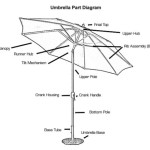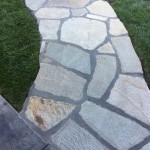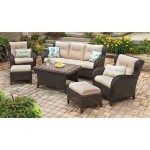Eliminating Flies From Your Patios
Flies are a common nuisance, particularly during warmer months. Their presence on patios not only detracts from outdoor enjoyment but also poses potential health risks due to their ability to transmit diseases. Effective fly control requires a multi-faceted approach that addresses both attracting factors and elimination methods. This article outlines strategies for minimizing and eliminating fly populations on patios, creating a more pleasant and hygienic outdoor environment.
Understanding the life cycle and habits of flies is crucial for implementing effective control measures. Flies undergo complete metamorphosis, progressing through four distinct stages: egg, larva (maggot), pupa, and adult. The duration of each stage varies depending on the fly species and environmental conditions, particularly temperature. Warmer temperatures accelerate development, leading to a more rapid increase in fly populations. Flies are attracted to a variety of substances, including decaying organic matter, food scraps, animal waste, and sugary liquids. By understanding these attractants, homeowners can take proactive steps to minimize fly breeding sites on and around their patios.
Identifying and Eliminating Fly Breeding Sites
The foundation of effective fly control lies in eliminating potential breeding sites. Flies require moist organic matter to lay their eggs and for their larvae to develop. Common breeding sites around patios include improperly sealed garbage cans, compost piles, pet waste, and spilled food or drinks. A thorough inspection of the patio and surrounding areas is essential to identify and address these breeding grounds.
Garbage cans should be equipped with tight-fitting lids and regularly cleaned to remove any accumulated food debris. Compost piles should be maintained properly, ensuring that they are turned frequently and that food scraps are buried deep within the pile to reduce odors and prevent fly access. Pet waste should be promptly removed and disposed of properly. Spilled food and drinks should be cleaned up immediately to prevent flies from being attracted to the patio. Standing water, even small amounts, can also serve as a breeding site for certain types of flies, so any stagnant water sources should be eliminated.
Beyond the immediate patio area, consider potential breeding sites in the surrounding yard. Overripe fruit that has fallen from trees, accumulated leaves, and poorly draining areas can all contribute to fly populations. Maintaining a tidy yard and addressing any drainage issues can significantly reduce the number of flies attracted to the patio.
It is also important to consider the role of beneficial insects in controlling fly populations. Certain predatory insects, such as parasitic wasps, feed on fly larvae and can help to reduce fly numbers. Encouraging these beneficial insects by providing suitable habitat, such as flowering plants, can contribute to a more balanced ecosystem and reduced reliance on chemical control methods.
Implementing Physical Barriers and Traps
Physical barriers and traps offer a non-chemical approach to controlling flies on patios. Screens on windows and doors can prevent flies from entering the house and subsequently venturing onto the patio. Fly traps, both commercially available and homemade, can effectively capture and kill adult flies.
Several types of fly traps are available, each with its own advantages and disadvantages. Sticky traps, which consist of a surface coated with adhesive, are effective at trapping flies but can be unsightly. Light traps, which attract flies with ultraviolet light and then electrocute them, are another option. Bait traps, which use a lure to attract flies into a container from which they cannot escape, are often considered more humane than sticky traps or light traps.
Homemade fly traps can be easily constructed using readily available materials. A simple trap can be made by filling a jar with a mixture of apple cider vinegar and a few drops of dish soap. The vinegar attracts the flies, while the dish soap reduces the surface tension of the liquid, causing the flies to drown. Another effective trap can be made by cutting the top off a plastic bottle, inverting it, and placing it inside the bottle, creating a funnel. A bait, such as a piece of fruit or a sugar solution, is placed in the bottom of the bottle to attract the flies.
The placement of fly traps is crucial for their effectiveness. Traps should be placed in areas where flies are commonly seen, such as near garbage cans or pet food bowls. It is also important to keep traps out of reach of children and pets. Regular maintenance of traps, such as replacing sticky surfaces or emptying bait traps, is necessary to ensure their continued effectiveness.
In addition to traps, consider using physical barriers such as fly swatters or handheld vacuum devices to remove individual flies. While these methods are not as effective for controlling large fly populations, they can provide immediate relief from annoying flies.
Utilizing Chemical Control Options (With Caution)
While eliminating breeding sites and implementing physical barriers are the preferred methods for controlling flies, chemical control options may be necessary in certain situations. However, it is important to use chemical insecticides with caution and to follow all label instructions carefully to minimize risks to humans, pets, and the environment.
Several types of chemical insecticides are available for fly control, including aerosols, sprays, and baits. Aerosols and sprays can be used to directly kill flies but may have a short-lived effect. Baits, which contain an insecticide mixed with a food attractant, can be more effective for controlling fly populations over a longer period of time.
When using chemical insecticides, it is essential to choose products that are specifically labeled for fly control and to follow all safety precautions. Wear appropriate protective gear, such as gloves and a mask, and avoid spraying insecticides near food or water sources. Keep children and pets away from treated areas until the insecticide has dried completely.
Consider using insecticides containing pyrethrins or pyrethroids, which are derived from chrysanthemum flowers and are generally considered less toxic than other insecticides. However, even these insecticides can be harmful if used improperly. Always read and follow the label instructions carefully.
It is also important to consider the potential impact of insecticides on beneficial insects. Broad-spectrum insecticides can kill beneficial insects along with flies, disrupting the natural balance of the ecosystem. Consider using more targeted insecticides or applying insecticides only to specific areas where flies are a problem.
Before resorting to chemical insecticides, explore alternative control methods, such as using essential oils as a natural repellent. Certain essential oils, such as peppermint, eucalyptus, and lavender, have been shown to repel flies. These oils can be diluted in water and sprayed around the patio area or used in diffusers.
Professional pest control services can be invaluable in situations where fly infestations are severe or difficult to control using DIY methods. Pest control professionals have the expertise and equipment to identify and address the root causes of fly infestations and to apply insecticides safely and effectively.
Ultimately, a comprehensive approach to fly control, combining elimination of breeding sites, implementation of physical barriers and traps, and judicious use of chemical insecticides when necessary, is the most effective way to create a fly-free patio.

How To Get Rid Of Flies On Your Outdoor Patio
:max_bytes(150000):strip_icc()/getting-rid-of-flies-outdoor-2656268_FINAL-729e4e7d8cd641dc9ccfaa659d73c98e.png?strip=all)
How To Get Rid Of Flies Outside On Porch Or In Backyard

How Do You Get Rid Of Flies Outside Forbes Home

How To Get Rid Of Flies Outside Quick Easy Methods
:max_bytes(150000):strip_icc()/getting-rid-of-flies-outdoor-2656268-hero-6a86867fc95d476da9d4a75133ca4c58.jpg?strip=all)
How To Get Rid Of Flies Outside On Porch Or In Backyard
What Is A Good Way To Get Rid Of Flies On The Porch There Isn T Anything Attracting Them As Far I Can See Quora

How To Get Rid Of Flies On My Porch Your Patio

How To Get Rid Of Flies Outside Quick Easy Methods

How To Keep Flies Away Outside With Pennies Bag Of Water

How To Get Rid Of Flies In The House 11 Quick Solutions
Related Posts








